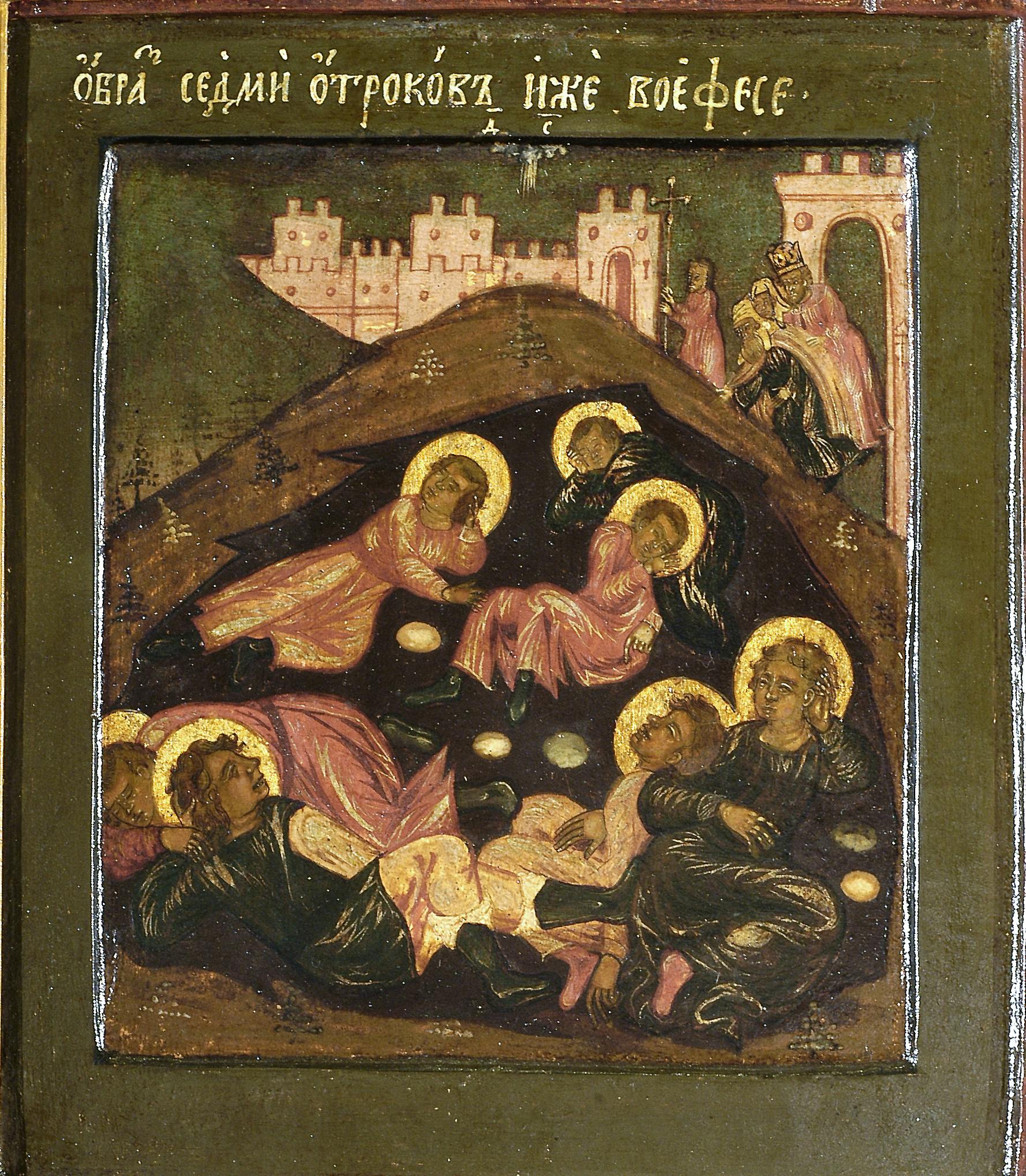The Seven Sleepers of Ephesus
Central Russia
The story goes that in the mid-3rd century, seven young soldiers of the Christian faith from the city of Ephesus in Asia Minor were stripped of their ranks when Emperor Decius, a persecutor of Christians, learned of their faith. Taking refuge praying in a grotto on Mount Coelian, they were imprisoned in a cave and condemned to starve to death there. Instead, the young men fell into a prodigious sleep and did not awaken until two centuries later, during the reign of the Christian emperor Theodosius (408-450).
When, after being freed by labourers looking for building stones, they tried to buy food in exchange for two centuries old coins, their story became well known and was considered testimony to the resurrection of the flesh awaiting humanity. When they died, the young men were buried in the cave that had housed them during their prodigious sleep, a place that became a significant pilgrimage destination.
In the Uffizi icon, the seven sleepers are arranged within the cave, one on top of the other, in free and abandoned poses. In the background, beyond the mountain, stand the walls of the city of Ephesus, and on the right is a small procession, led by a man with a cross, visiting the cave. The figure of a king, perhaps the emperor Decius, stands out from the group.
The icon's small size is evidence of its domestic purpose, which is also linked to veneration for the seven sleepers, invoked for protection against the devil.
Dating back to the second quarter of the 18th century, the icon is characterised by adopting elements of Baroque taste which are also shared by most of the icons in the Uffizi, though it has peculiar features traceable to a provincial painter.
